UPDATE: A New York Times article published on January 10, 2020 scrutinizes the hiring of EAM Executive Director, Joshua Helmer, focusing on behavior reported at both EAM and Philadelphia Museum of Art. This does not take away from the great work being done at EAM, but we are reminded of the ongoing nature of this work and the need to work towards transformational change at all levels of an organization.
| With this post we launch our Honor Roll of Empathetic Practice. Here we will feature the work of museums or cultural institutions that exemplify one or more of the elements of institutional empathy as outlined in our Maturity Model: Civic Vision, Institutional Body Language, Community Resonance, Timeliness and Sustainability, and Performance Measurement. |
It isn’t always smooth or easy, diversity is hard, but it creates a richer environment for everyone.
We were excited to learn recently of the work of the Erie Art Museum and their program Old Songs New Opportunities—a program that harnesses the talents of former refugees to share traditional songs in childcare centers. We were fortunate to communicate with Director of Education & Folk Art, Kelly Armor, who explained the timeliness and community resonance of the program as well as the program’s alignment with institutional goals:
“In 2003 the Erie Art Museum was designated a Regional Folk Art Support Center by the Pennsylvania Council on the Arts. This state-wide program designates particular non-profits in different regions of PA to provide basic infrastructure for traditional arts, basic fieldwork in identifying artists in one’s region, and assisting folk artists in perpetuating their traditions and creating more community access to folk art. As I got to know the refugee community here, and my experience working with early childhood I saw that both groups could really benefit from each other: Child cares don’t have enough staff who will freely sing with children (most Americans don’t grow up with a traditional sense of song and they feel they can’t sing) and they also are hungry for authentic multicultural curriculum. Refugee women need jobs and a path to figure out their identity in their new home.”
We asked Kelly to tell us a little about the challenges and opportunities that the museum faced in sustaining the program after its initial launch. Cultural differences and facilitating genuine cross-cultural understanding proved challenging, but ultimately rewarding for participants and the institution. Also, taking on larger social issues allowed the museum to address deep-seated community needs while improving the community as a whole—and promoting diversity and inclusion.
“Some of the trainings we’ve had some tense moments because different cultures do things differently and there are misunderstandings and judgements. But we’ve been able to use those ‘teachable moments’ to really create true cross-cultural understanding…. One huge challenge is that Pennsylvania, over the past 10 years, has had a major initiative to professionalize the childcare workforce. This has been, on the whole, a good thing. Many childcare teachers are getting much more training and are becoming better teachers. There are now powerful financial incentives for childcares to hire professional staff. Unfortunately the state is very narrow in their definition of qualifications and it is completely measured by whether you have a degree. Despite best practices saying it is best to have staff diversity, because of these new programs, staff has become much less diverse, and it has been much harder for women from our program to get jobs.”
“In 2003 the Erie Art Museum was designated a Regional Folk Art Support Center by the Pennsylvania Council on the Arts. This state-wide program designates particular non-profits in different regions of PA to provide basic infrastructure for traditional arts, basic fieldwork in identifying artists in one’s region, and assisting folk artists in perpetuating their traditions and creating more community access to folk art. As I got to know the refugee community here, and my experience working with early childhood I saw that both groups could really benefit from each other: Child cares don’t have enough staff who will freely sing with children (most Americans don’t grow up with a traditional sense of song and they feel they can’t sing) and they also are hungry for authentic multicultural curriculum. Refugee women need jobs and a path to figure out their identity in their new home.”
We asked Kelly to tell us a little about the challenges and opportunities that the museum faced in sustaining the program after its initial launch. Cultural differences and facilitating genuine cross-cultural understanding proved challenging, but ultimately rewarding for participants and the institution. Also, taking on larger social issues allowed the museum to address deep-seated community needs while improving the community as a whole—and promoting diversity and inclusion.
“Some of the trainings we’ve had some tense moments because different cultures do things differently and there are misunderstandings and judgements. But we’ve been able to use those ‘teachable moments’ to really create true cross-cultural understanding…. One huge challenge is that Pennsylvania, over the past 10 years, has had a major initiative to professionalize the childcare workforce. This has been, on the whole, a good thing. Many childcare teachers are getting much more training and are becoming better teachers. There are now powerful financial incentives for childcares to hire professional staff. Unfortunately the state is very narrow in their definition of qualifications and it is completely measured by whether you have a degree. Despite best practices saying it is best to have staff diversity, because of these new programs, staff has become much less diverse, and it has been much harder for women from our program to get jobs.”
Kelly’s comments helped illuminate the importance of consistent, sustained efforts to meet community needs, and the payoffs from strong alignment between stated program goals and values, and other aspects of museum programming and training:
“Our program is not exhibit related, but we have used OSNO in a variety of public programming that has been very successful. We regularly use OSNO graduates to assist with teacher trainings. We build entire workshops around their songs, cuisine, clothing, and child-rearing traditions for childcare providers…. We also have OSNO grads help with teacher workshops for K-12 educators where we can go more deeply into history, culture, and pedagogy.”
After assessing program outcomes, Kelly’s team worked to strengthen stated goals and make positive outcomes more self-sustaining. Their experiences speak to the importance of tracking and responding to performance measures, and of allowing an initiative to grow and evolve in response to new opportunities, needs, and setbacks.
“American childcare teachers LOVED our workshops. We often filled them to capacity. They loved learning about the cultures and meeting the OSNO grads. But we discovered that it wasn’t fundamentally changing their teaching practice. They might have done a lesson that used material they got from the training, and they certainly became more empathetic towards their own students from other cultures, but no one was singing more. We distributed CDs so they could learn the songs to use with children, but instead, they’d just play the CD. So, we sent OSNO grads as song coaches into every single classroom of the three largest childcare providers in the county. They worked with over 300 teachers in over 100 classrooms at 30 sites.”
The reciprocity of OSNO speaks strongly to the Empathetic Museum Maturity Model. In particular, genuine collaborations help museums achieve greater community resonance and stronger alignment between mission and institutional body language.
“Public programs have included OSNO graduates presenting their songs at our Blues and Jazz festival, and hosting World Refugee Day celebrations annually, and working them into our monthly family program. Some of our graduates are amazing artists, and I’ve been able to help them get grants to pass their traditions to capable apprentices and to purchase supplies. Some of them we hire to assist with tours. They tell stories and sing songs that connect with current exhibits.”
“Our program is not exhibit related, but we have used OSNO in a variety of public programming that has been very successful. We regularly use OSNO graduates to assist with teacher trainings. We build entire workshops around their songs, cuisine, clothing, and child-rearing traditions for childcare providers…. We also have OSNO grads help with teacher workshops for K-12 educators where we can go more deeply into history, culture, and pedagogy.”
After assessing program outcomes, Kelly’s team worked to strengthen stated goals and make positive outcomes more self-sustaining. Their experiences speak to the importance of tracking and responding to performance measures, and of allowing an initiative to grow and evolve in response to new opportunities, needs, and setbacks.
“American childcare teachers LOVED our workshops. We often filled them to capacity. They loved learning about the cultures and meeting the OSNO grads. But we discovered that it wasn’t fundamentally changing their teaching practice. They might have done a lesson that used material they got from the training, and they certainly became more empathetic towards their own students from other cultures, but no one was singing more. We distributed CDs so they could learn the songs to use with children, but instead, they’d just play the CD. So, we sent OSNO grads as song coaches into every single classroom of the three largest childcare providers in the county. They worked with over 300 teachers in over 100 classrooms at 30 sites.”
The reciprocity of OSNO speaks strongly to the Empathetic Museum Maturity Model. In particular, genuine collaborations help museums achieve greater community resonance and stronger alignment between mission and institutional body language.
“Public programs have included OSNO graduates presenting their songs at our Blues and Jazz festival, and hosting World Refugee Day celebrations annually, and working them into our monthly family program. Some of our graduates are amazing artists, and I’ve been able to help them get grants to pass their traditions to capable apprentices and to purchase supplies. Some of them we hire to assist with tours. They tell stories and sing songs that connect with current exhibits.”
Refugees, to the general public, are pretty invisible. Unless you live in the poorest neighborhoods you don’t really have contact with them. Many visitors have told us how deeply grateful they are to witness the richness that they bring.
Kelly’s responses also reflect the challenge of sustaining community responsiveness with available resources. The Empathetic Museum Maturity Model advocates community connection, collaborative spirit, and civic leadership—buoyed by a core of institutional empathy. The OSNO program provides a great example of how a core of empathy can guide museums through the challenges and opportunities of responding to community issues, and making change that endures. Kelly’s comments reveal how empathetic practice produces noticeable benefits even when the fullest outcomes are not realized right away:
“All the supervisors reported that the song coach visits got every one singing, and all of them said, unequivocally, that it made their centers happier places. Singing lightened the mood, and teachers were using much less punitive discipline measures because children’s social behavior was better. Despite this, it takes work, and many teachers have probably stopped singing as much. I wish we could visit everyone every 6 months or so to teach them new songs and continue encouraging them.”
OSNO facilitates empathy at all levels of the program as well as between individuals, institutions, and the broader community:
“I often describe OSNO as a job training and culture preservation project but it is all about empathy. One OSNO grad said that the OSNO songs are like little passports, they open up doors that were previously closed…. The same woman who said the songs are like passport, who is from Palestine said, ‘When I sing to you, you can’t hate me.’ These songs are charming and disarming and now more than ever, we need both to be charmed and disarmed!”
OSNO also elevates the status of refugee and immigrant communities and enriches the non-refugee community, demonstrating institutional body language that champions diversity and cross-cultural understanding:
“Also, American teachers really respond to the OSNO song coaches as people. They have said to the OSNO grads, ‘I like learning the songs, but it really becomes meaningful knowing you.’ I remember one OSNO song coach describing life in a refugee camp and explained that the child that patiently waits in line will not get any food. She said she worked hard with refugee children to teach them to wait in line, but she did it gently as she understood that the child was simply using survival skills learned in the camp. I’ve heard lots of teachers retelling that story — it had a huge impact on them.”
Finally, in a recent post on the Center for the Future of Museums blog, John Vanco, Director of the Erie Art Museum, explained how the program benefits the institution, the participants, and the community, and bridges a critical service gap in the community:
“We do it because no other institution in our region is treating refugees as the cultural assets that they are. We do it because we’ve literally seen the lives of refugees change when they get jobs that honor their talents…. We have benefited from this work as well. We can boast excellent relationships with our refugee community, the social service agencies that serve them, and scores of child care programs. These relationships have generated new collaborations and an increase in tours. Former refugees and early childhood teachers who never would have considered visiting the museum are now part of our regular audience.”
Old Songs New Opportunities recently released a CD of 35 songs collected as part of the job training and sung in both the native languages and in English. Learn more here.
If you would like to recommend your own museum, or know of another institution engaged in empathetic practice, please contact us here. We want to know about your work! Watch this space for new honorees.
Learn more about OSNO:
Video by childcare partner about why they do the program: https://youtu.be/Wqx0cr3-T9w
Video about the teacher’s perspective on using OSNO songs: https://youtu.be/g6wmz9v_3e8
“All the supervisors reported that the song coach visits got every one singing, and all of them said, unequivocally, that it made their centers happier places. Singing lightened the mood, and teachers were using much less punitive discipline measures because children’s social behavior was better. Despite this, it takes work, and many teachers have probably stopped singing as much. I wish we could visit everyone every 6 months or so to teach them new songs and continue encouraging them.”
OSNO facilitates empathy at all levels of the program as well as between individuals, institutions, and the broader community:
“I often describe OSNO as a job training and culture preservation project but it is all about empathy. One OSNO grad said that the OSNO songs are like little passports, they open up doors that were previously closed…. The same woman who said the songs are like passport, who is from Palestine said, ‘When I sing to you, you can’t hate me.’ These songs are charming and disarming and now more than ever, we need both to be charmed and disarmed!”
OSNO also elevates the status of refugee and immigrant communities and enriches the non-refugee community, demonstrating institutional body language that champions diversity and cross-cultural understanding:
“Also, American teachers really respond to the OSNO song coaches as people. They have said to the OSNO grads, ‘I like learning the songs, but it really becomes meaningful knowing you.’ I remember one OSNO song coach describing life in a refugee camp and explained that the child that patiently waits in line will not get any food. She said she worked hard with refugee children to teach them to wait in line, but she did it gently as she understood that the child was simply using survival skills learned in the camp. I’ve heard lots of teachers retelling that story — it had a huge impact on them.”
Finally, in a recent post on the Center for the Future of Museums blog, John Vanco, Director of the Erie Art Museum, explained how the program benefits the institution, the participants, and the community, and bridges a critical service gap in the community:
“We do it because no other institution in our region is treating refugees as the cultural assets that they are. We do it because we’ve literally seen the lives of refugees change when they get jobs that honor their talents…. We have benefited from this work as well. We can boast excellent relationships with our refugee community, the social service agencies that serve them, and scores of child care programs. These relationships have generated new collaborations and an increase in tours. Former refugees and early childhood teachers who never would have considered visiting the museum are now part of our regular audience.”
Old Songs New Opportunities recently released a CD of 35 songs collected as part of the job training and sung in both the native languages and in English. Learn more here.
If you would like to recommend your own museum, or know of another institution engaged in empathetic practice, please contact us here. We want to know about your work! Watch this space for new honorees.
Learn more about OSNO:
Video by childcare partner about why they do the program: https://youtu.be/Wqx0cr3-T9w
Video about the teacher’s perspective on using OSNO songs: https://youtu.be/g6wmz9v_3e8

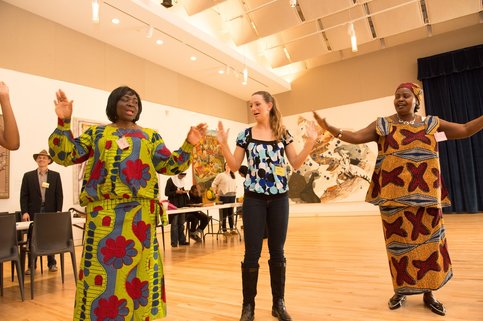
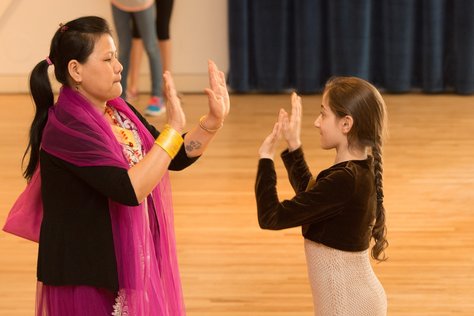

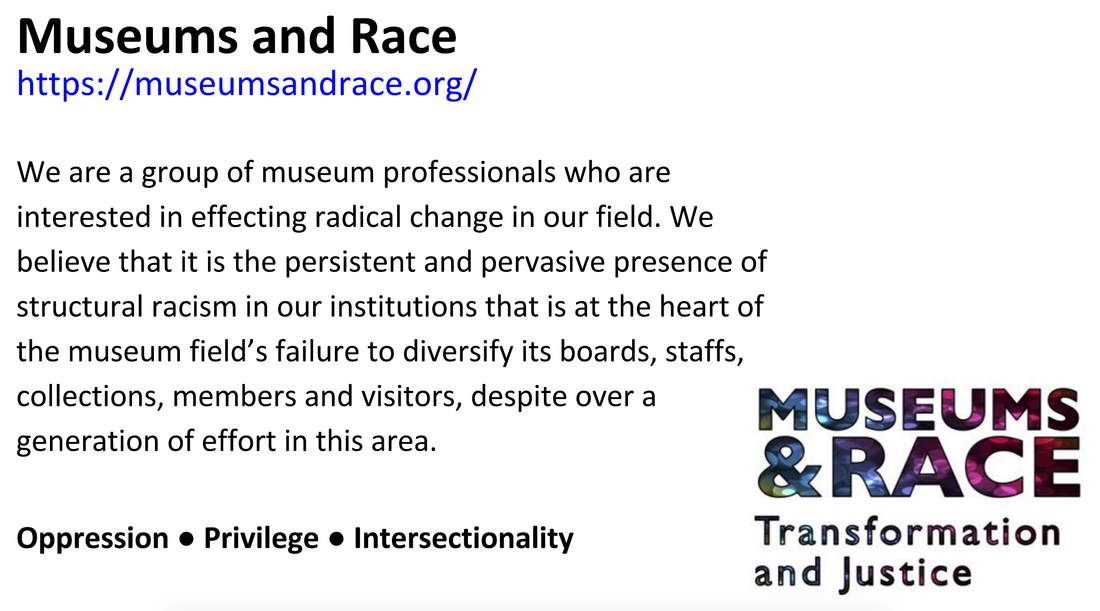
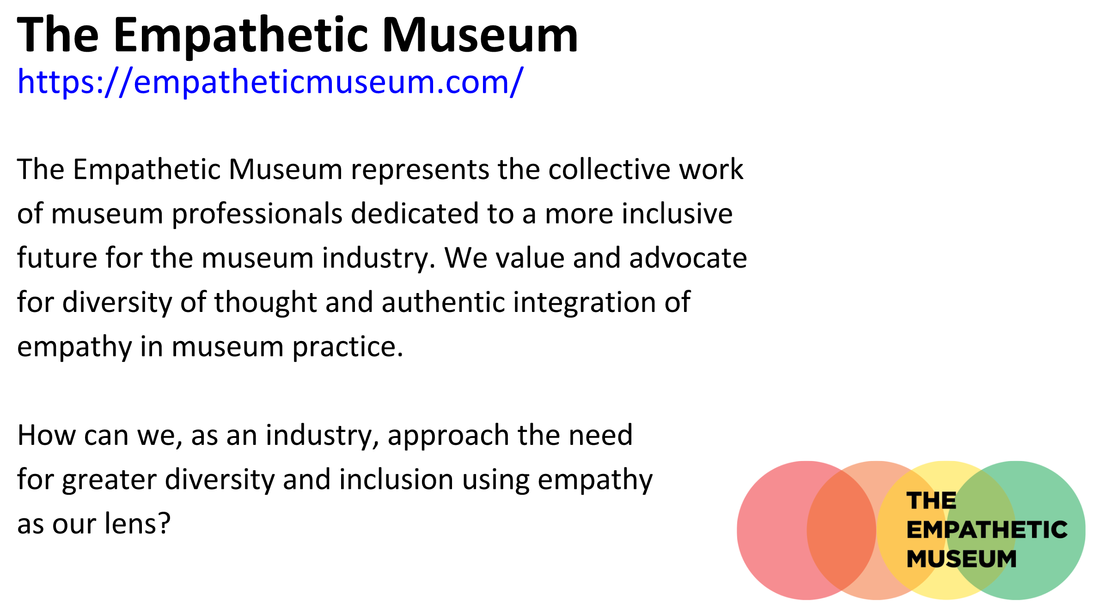
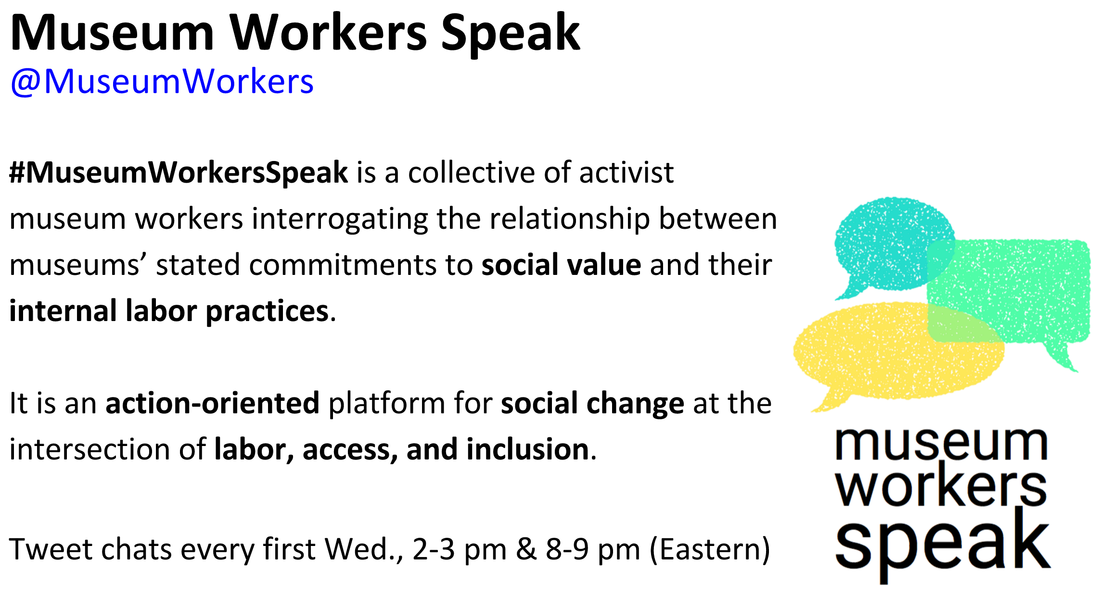
 RSS Feed
RSS Feed
